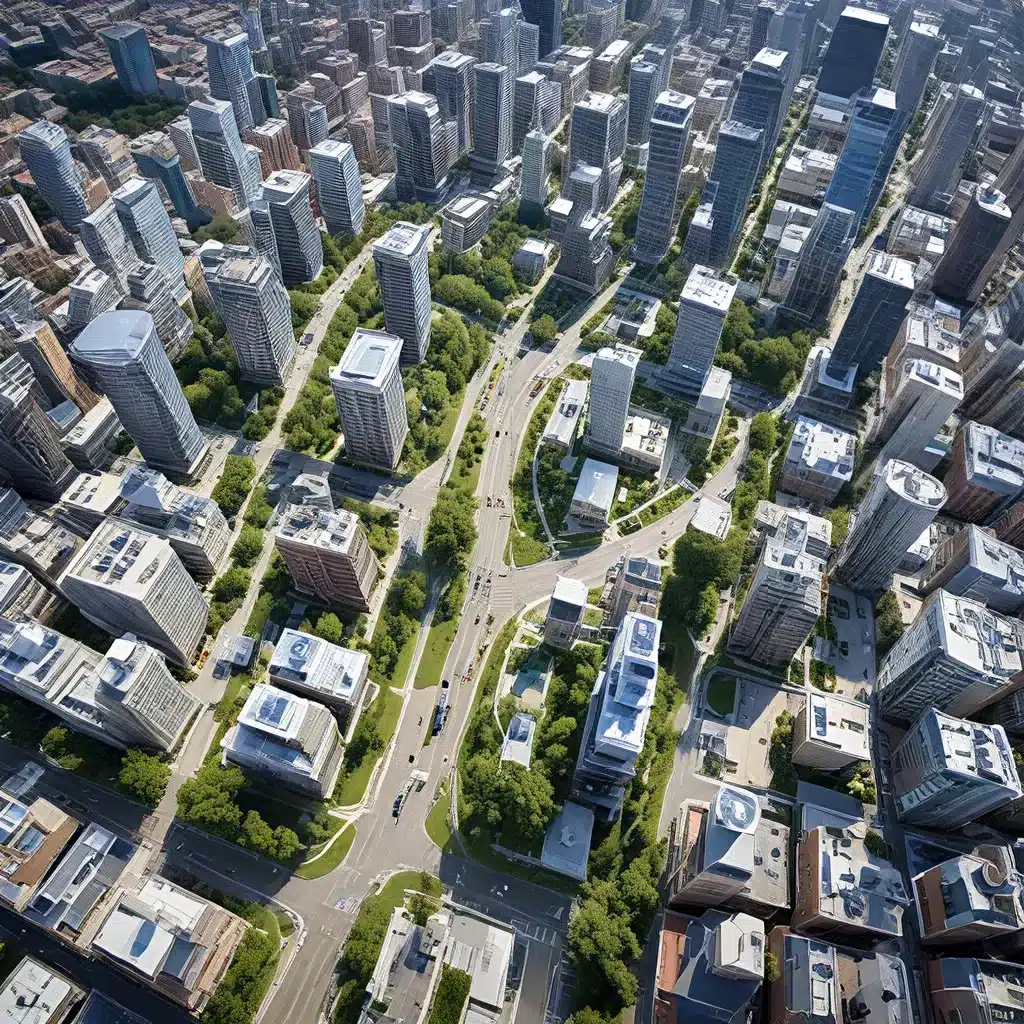
Unlocking the Potential of Sensor Networks for Urban Sustainability
The rapid growth of cities has made them a global priority for decarbonization efforts. With over 50% of the world’s population currently residing in urban areas and this figure expected to reach almost 70% by 2050, cities have become a significant contributor to global carbon dioxide (CO2) emissions, generating around 70% of these emissions. As the world recovers from the COVID-19 pandemic, CO2 rates are rebounding rapidly, emphasizing the urgent need to address this challenge.
However, the constantly evolving technology landscape presents new opportunities to transform cities into sustainable, resilient, and smart hubs. Sensor networks and the Internet of Things (IoT) have emerged as powerful tools to optimize energy systems, improve air quality, and enhance urban planning and operations. By synthesizing the vast amounts of data generated by these technologies, cities can make better-informed decisions and address critical issues related to equity, reliability, and efficiency.
Empowering Renewable Energy Integration
The electrification of transport and heating, coupled with the increasing generation from distributed renewables, require a broad portfolio of flexibility options to maintain grid stability and reliability. Digital solutions and smart sensor networks can play a crucial role in this transition, enabling the efficient integration of variable renewable energy sources and supporting the decarbonization of the energy sector.
Smart buildings, equipped with advanced sensors and controls, can provide flexibility to the power system by optimizing energy consumption and enabling behavioral and lifestyle changes that lead to sustainable energy use. This integration of buildings and the power grid can enhance energy efficiency, security, and resilience, helping cities achieve their climate goals.
Transforming Urban Mobility
The digitalization of transportation is also transforming the mobility landscape, improving energy efficiency, facilitating shifts to active and shared transport modes, and enhancing the convenience and reliability of public transport. The proliferation of electric vehicles (EVs) can further enable the integration of variable renewables through flexibility services such as smart charging and vehicle-to-grid (V2G) services. Time-of-use strategies can help shift around 60% of the power generation capacity needed to charge EVs away from peak loading, optimizing the use of renewable energy sources.
Addressing IoT Security and Privacy Concerns
As cities become increasingly reliant on sensor networks and IoT technologies, the issue of data security and privacy has become paramount. Malicious actors can exploit vulnerabilities in IoT devices to gain unauthorized access, disrupt critical infrastructure, or steal sensitive information. To address these concerns, robust security protocols, encryption techniques, and comprehensive data governance frameworks must be implemented to protect the integrity and confidentiality of the data generated by these systems.
The International Energy Agency’s (IEA) report “Empowering Cities for a Net Zero Future” highlights the importance of timely, robust, and transparent access to data as a key recommendation for national policymakers. This ensures that cities can make informed decisions and leverage the full potential of digital solutions in their pursuit of sustainable urban development.
Enhancing Energy Management through Sensor Networks
Sensor networks play a crucial role in optimizing energy management within cities. By monitoring energy consumption patterns, detecting anomalies, and providing real-time insights, these systems enable more efficient energy usage, reduced waste, and better integration of renewable energy sources. Additionally, advanced analytics and machine learning algorithms can help predict energy demand, optimize load balancing, and identify opportunities for energy efficiency improvements.
| Network Topology | Advantages | Disadvantages |
|---|---|---|
| Star | Simple, centralized control, low energy consumption | Single point of failure, limited scalability |
| Mesh | Redundancy, self-healing, improved coverage | Increased complexity, higher energy consumption |
| Hybrid | Combines advantages of star and mesh, adaptable | Requires more sophisticated coordination and management |
The choice of network topology for sensor networks in urban environments depends on factors such as scalability, reliability, energy efficiency, and cost. Hybrid architectures that leverage the strengths of both star and mesh topologies are becoming increasingly popular, as they offer improved flexibility and adaptability to the dynamic needs of smart cities.
Unlocking Sustainable Financing for Smart City Initiatives
Implementing smart city initiatives and sustainable energy solutions requires significant financial resources. National and local governments play a crucial role in providing financial incentives, promoting innovative financing mechanisms, and de-risking clean energy projects to encourage private investment.
Collaboration between different levels of government is essential to make the best use of resources and ensure that national efforts focus on tasks that cannot be done at a more local level. This coordinated approach can help meet shared objectives while advancing progress on equitable energy transitions.
Conclusion: Embracing the Future of Sustainable Cities
The integration of sensor networks, IoT technologies, and renewable energy sources has the potential to transform cities into vibrant, sustainable, and resilient urban hubs. By optimizing energy systems, enhancing mobility, and addressing security and privacy concerns, cities can unlock a brighter, more sustainable future for their residents.
As the world continues to urbanize, the role of sensor networks and smart city technologies will become increasingly critical in achieving global climate goals and improving the quality of life for urban dwellers. By embracing these innovative solutions and fostering collaboration between national, regional, and local governments, cities can pave the way for a more sustainable and empowered future.